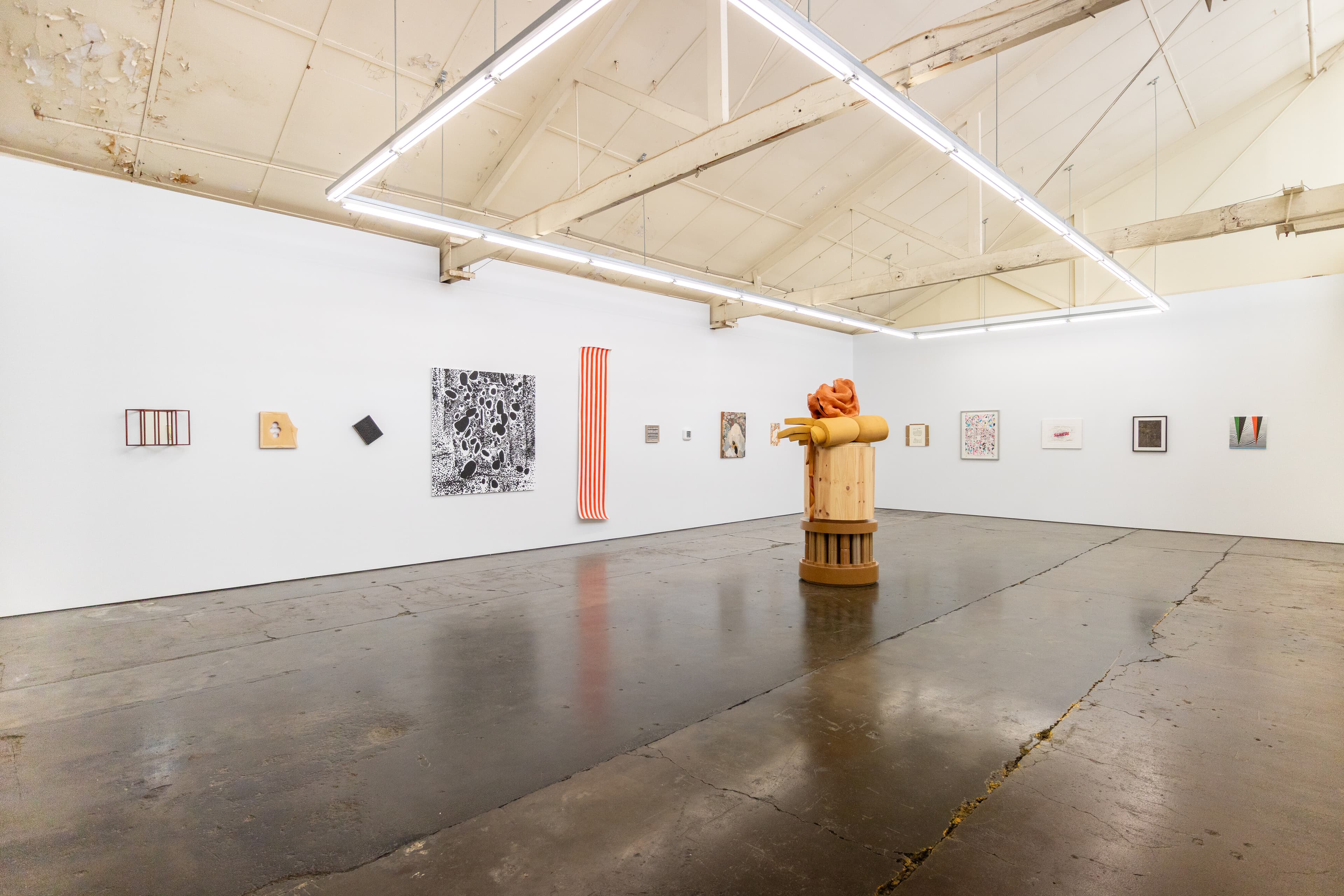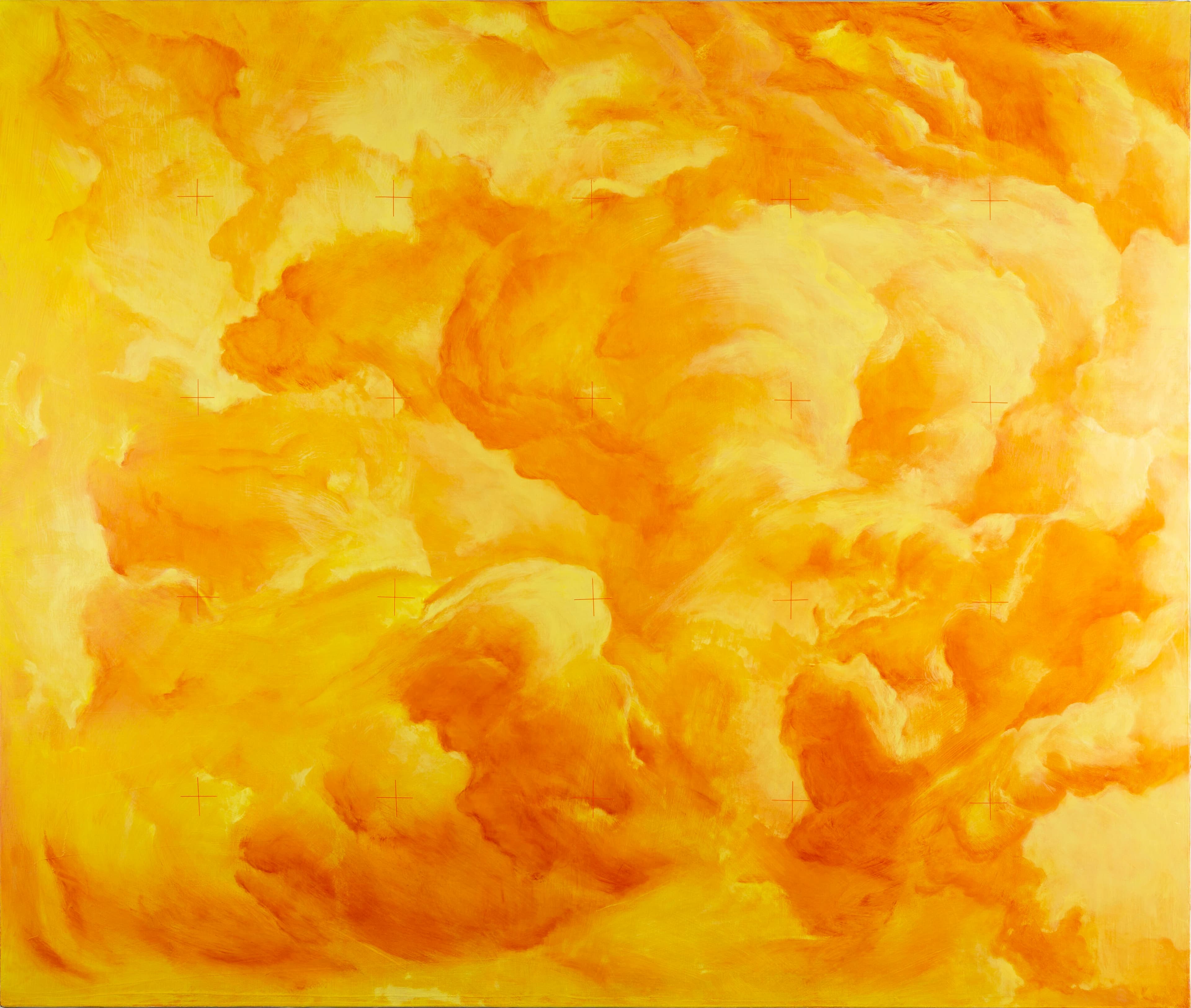Paulina Ołowska, Principia and her pet (2021)
Gemma Topliss
Footnotes for the painting Principia and Her Pet (2021) by Paulina Ołoswka.
1. Just as in fashion, where one assembles a garment using patterns, in art one assembles an image (image here means idea, painting, sculpture or otherwise) using references. The separate parts are joined to form one enshrining whole.
2. There is an inevitability to mythology. Dragons are rare in their ubiquity, in that they appear in every lore, across culture and place. They are archetypal; their existence is most likely born from humanity’s innate fear of snakes, bolstered by the urge to explain staggering natural phenomena such as thunderstorms and lightning, and brought to life by the pre-scientific discovery of the skeletons of dinosaurs and prehistoric mammals. Ołowska alludes to this in painting three images of the dragon; there is the depiction of Principia’s pet, the European fresco in the frame behind Principia, and the East Asian carved ornament sitting on the cabinetry.

3. In one of its earliest iterations, the legend of Saint George and the dragon begins in the city of Silene in Libya. The city was being terrorised by a dragon with poisonous breath, which polluted the land’s water supply of a nearby lake. A plan was arranged to placate the monster in the form of a regular sacrifice. When the offering of livestock no longer appeased the beast, a man was also presented alongside a sheep. When this too failed, a lottery was established, its unwilling entrants were all of the youth of the land. When the King’s daughter was chosen, he attempted to save her by begging his subjects to accept gold and silver in exchange for another victim. His subjects threatened uprising in the face of hypocrisy, and he eventually accepted the princess’ fate. He wept because he would never see her be married, and when she was sent to the dragon she was adorned in bridal wear. Saint George happened across her and, despite her protests, he refused to leave her. As they argued the dragon appeared and charged at the pair. Saint George made the sign of the cross and attacked the beast with his sword and then his spear, throwing it to the ground. He ordered the princess to throw him the girdle fastened around her waist, which they used to leash the dragon. Wherever she walked, the dragon followed, like a mansuetissima canis in the original Latin, or “the tamest dog.”
4. The name Principia means a beginning, an origin, a groundwork, or foundation. In Ołowska’s rendition, she is the principal at the helm of a fictitious female educational community, a fantasy conglomerate inspired by various women-run schools from throughout history, including the Soviet Republic technical schools and the Women’s School of Planning and Architecture in the United States. It is necessary for an end to precede a beginning, just as an original necessitates a copy. Ołowska uses the notion of the reference in the literal lifting of her source material from photographic archives, fashion editorials, and advertisements, as well as it being a conceptual linchpin of her work. Pictured is the principal character, the Principal, named Principia. Her girlish appearance evokes mythical allusions, suggesting she is perhaps far older than she appears and is unburdened by the passing of time, and presses on the fetishisation of youth throughout Western art and into contemporary fashion imagery. The painting employs the visual language of a hero image, which is usually the focus of a fashion editorial or advertising campaign. Saint George is no longer the hero. Ołowska repurposes the myth to fashion as a reference to a new one.
5. A friend uses a dichotomy of fictitious worlds to describe two types of objet d’amour, one of which is a prestigious tertiary institution in the Swiss Alps named Belvedere Academy. The women who attend this fantastical academy make up the first of the two types. How I understand their classification is that they are dark academia adjacent, fierce in their intellect, Miu Miu-esque, and with low grade magical abilities.
6. Teenage fashion empire Brandy Melville takes as its namesake the fictitious characters of Brandy, an American girl, and Melville, an Englishman, who meet in Rome and fall in love. Its own side-brand, John Galt, is named after a character from an Ayn Rand novel.
7. A thirteenth-century manuscript illustration of the legend of Saint George depicts the princess standing to the side as George pierces the dragon. Her gaze is cast towards him with a poised hand lifted to her chest. The princess’ arm falls by her side, her other hand clasping a red and white girdle. It is looped around the neck of the dragon. He has become her pet.
Gemma Topliss is a writer and artist from Naarm/Melbourne.


